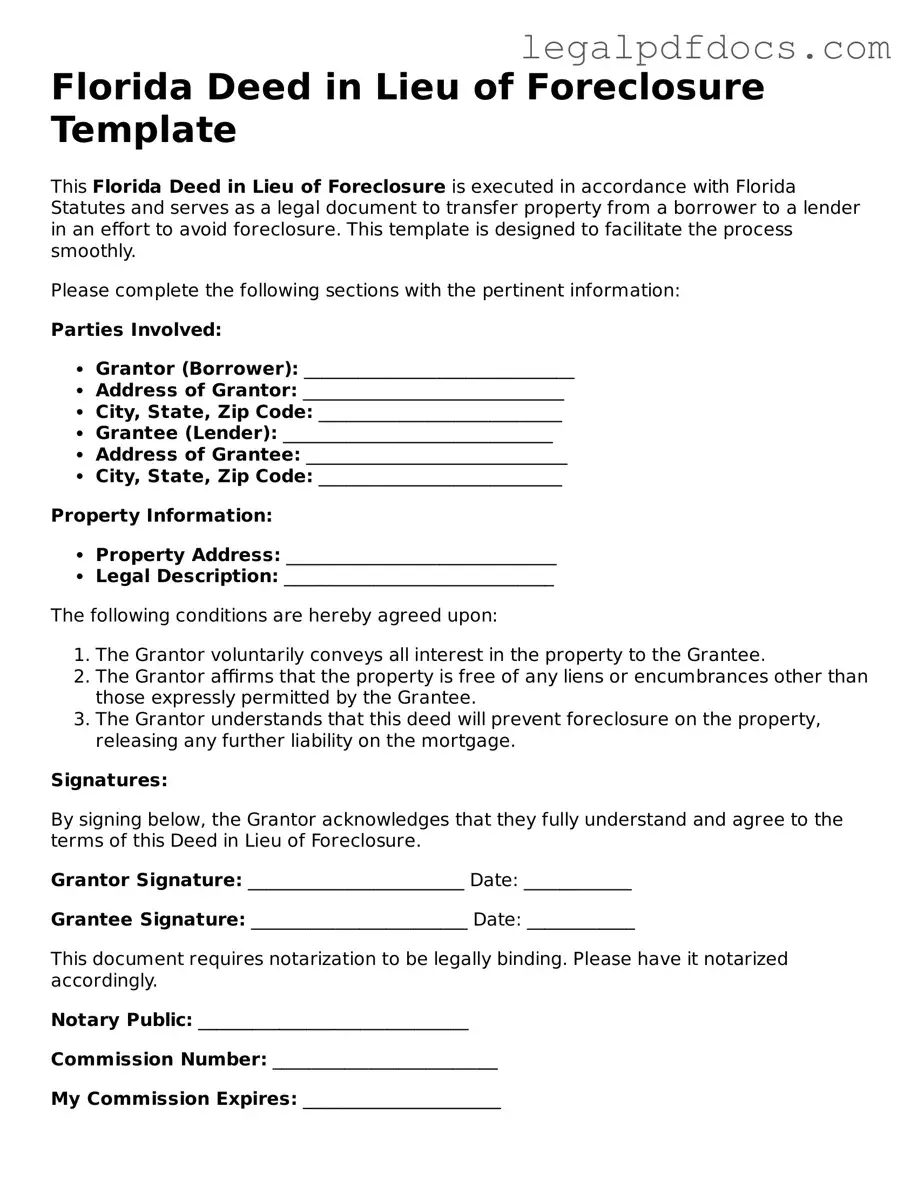Official Deed in Lieu of Foreclosure Form for Florida
A Deed in Lieu of Foreclosure is a legal document that allows a homeowner to voluntarily transfer ownership of their property to the lender to avoid foreclosure. This process can provide a quicker resolution and potentially less damage to the homeowner's credit. If you are considering this option, it is crucial to fill out the form accurately and promptly—click the button below to get started.
Open Deed in Lieu of Foreclosure Editor Here
